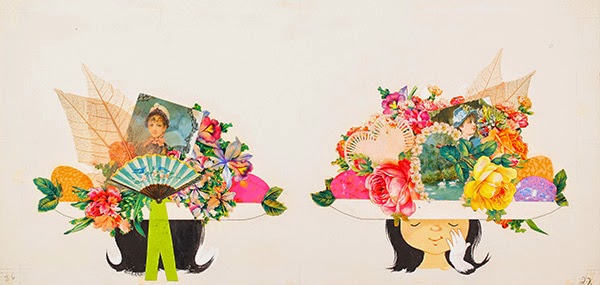The Snowy Day proves that book illustrations don't just belong in books. "Finally, he reached the King's high palace" has the glow of a Klimt and the sublimity of a Caspar David Friederich painting. It takes your breath away, in what can only remotely match the awe of a traveler who has reached his destination.
But of course, book illustrations are meant for books, and this show is a testament to the value of the hand-held page. One can imagine words scrawled into the space Keats left for them, be it a marbled sky or a mound of snow. But his illustrations, too, can easily stand alone.
Jack Ezra Keats gained notoriety after his publication of The Snowy Day in 1962. It was the first full-color, modern book to feature an African American protagonist-- an important addition to the conversation on civil rights. He went on to publish other books with African American protagonists, a choice that led many to think he was black. Keats, in fact, was the son of Jewish immigrants in Brooklyn.
 |
| Ezra Jack Keats, “After breakfast he put on his snowsuit and ran outside.” Final illustration for The Snowy Day, 1962. Collage and paint on board. Courtesy Skirball Cultural Center |
 |
| Ezra Jack Keats, “They added a picture of swans . . . leaves . . . and some paper flowers.” Final illustration forJennie’s Hat, 1966. Collage and paint on paper. Courtesy Skirball Cultural Center |
 |
| Installation view (replete with interactive bathtub), The Snowy Day and the Art of Ezra Jack Keats. |
The Snowy Day and the Art of Ezra Jack Keats is on view at the Skirball Cultural Center (Los Angeles) through September 7, 2014.


No comments:
Post a Comment